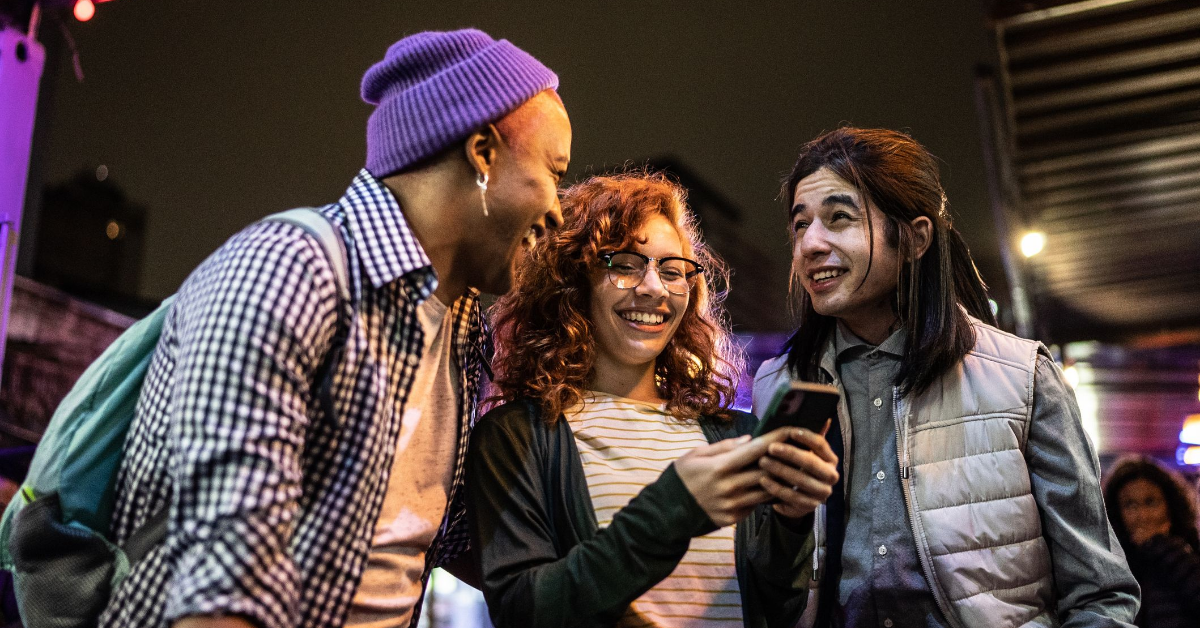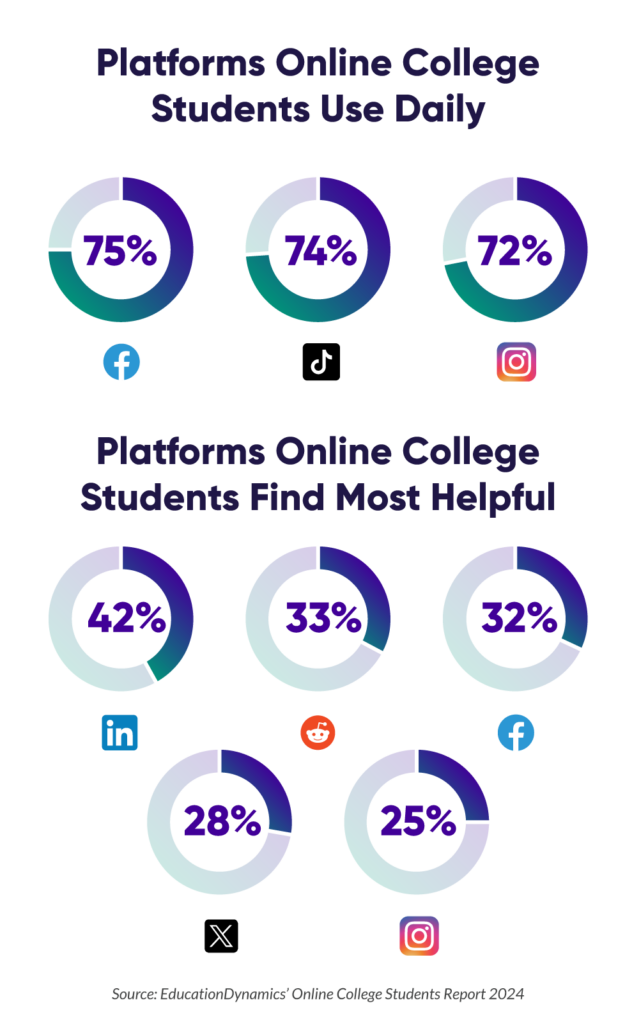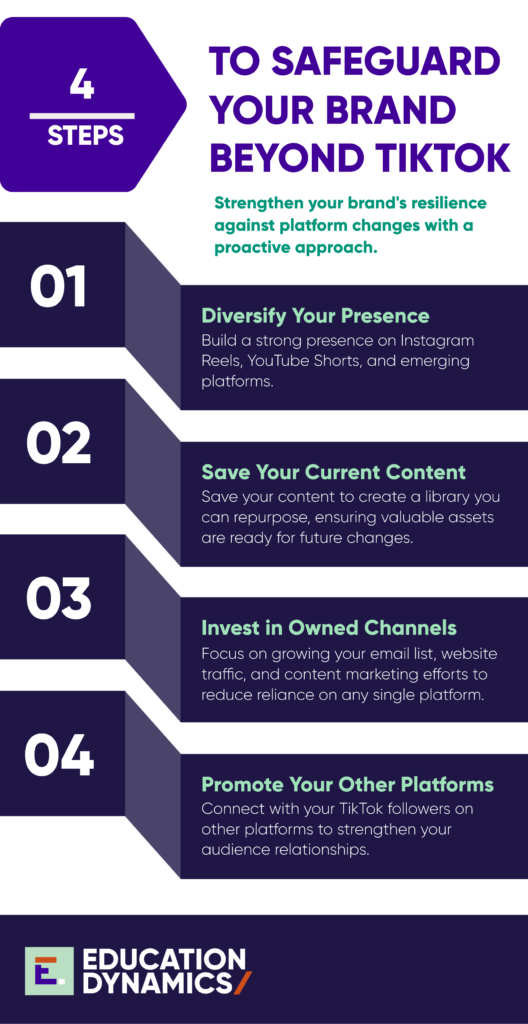Navigating the Uncertainty: TikTok Marketing in the Face of Potential Bans

If you’ve scrolled TikTok recently, you might have noticed that some of your favorite creators have started bringing up their other handles, encouraging you to follow them on different platforms. With the ban possibly becoming effective as early as January 2025, this trend is becoming increasingly popular. From micro-influencers to brand giants, creators are taking decisive action, urging their audiences to follow them on alternative platforms as a failsafe. These creators aren’t just reacting—they are leading the pack by ensuring that their followers stay connected, no matter what challenges lie ahead.
As the calendar inches closer to January, the time to rethink and implement your digital strategy is now.
For marketers who have leveraged TikTok’s platform to amplify their brands and connect with consumers in unprecedented ways, the looming possibility of bans or restrictions raises pressing questions about the sustainability of their marketing strategies. As we navigate this pivotal moment in digital marketing history, it’s crucial for marketers to assess the implications of potential TikTok bans and explore alternative strategies to adapt to an evolving landscape.
Understanding the Current Landscape
In April 2024, President Biden signed the “Protecting Americans from Foreign Adversary Controlled Applications Act,” requiring TikTok’s parent company, ByteDance, to find a buyer within nine months or face a nationwide ban in The United States. The legislation, if enacted, would result in TikTok losing all market share in the U.S., effectively removing the app from the country’s digital landscape and preventing millions of American users from accessing its content.
The ban stems from rising concerns over national security and data privacy, given ByteDance’s origins in China. American policymakers and critics of TikTok contend that the Chinese government could gain access to sensitive data and influence Americans on geopolitical issues, both posing significant concerns for American users’ privacy and national security. U.S. Lawmakers have cited these concerns by drawing attention to potential laws that could “allow the Chinese government to secretly demand data from Chinese companies and citizens for intelligence-gathering operations.” Additional concerns include the app’s ability to fuel misinformation through TikTok’s content recommendations. This isn’t the first time these fears have been highlighted, as President Trump attempted to ban the video-sharing app back in 2020.
In May 2024, TikTok responded to President Biden’s proposed ban with a lawsuit, arguing that the bill violates Americans’ First Amendment rights. If the bill succeeds, the ban will remove TikTok from all app stores, effectively hindering the ability for the platform to garner new downloads and provide updates to active users, which would render TikTok obsolete over time.
The ban on TikTok could significantly impact the way marketers manage their advertising. Currently, U.S. ad businesses on TikTok are anticipated to see $10.42 billion in ad revenues in 2024. Furthermore, forecasts anticipate that TikTok will “make up 12% of US social network ad spend and 3.4% of US digital ad spend in 2024.” TikTok’s potential ban underscores the critical need for marketers to stay informed and adaptable, given the platform’s sizeable relevance in the U.S. ad market.
Building a Multi-Platform Ecosystem
In an era of rapid digital evolution, building a multi-platform ecosystem is no longer just a strategy—it’s a necessity. The volatility of social media platforms is no secret. Given recent challenges with platforms like Twitter, now X, we’re well aware of the vast changes in the realm of social media. The potential TikTok ban further underscores the risk of relying too heavily on a single platform. For marketers, this means a single-threaded approach to video marketing is a vulnerability they cannot afford.
One of the most effective ways to mitigate such vulnerability is to diversify. At EducationDynamics, we have long recommended a diversified approach when it comes to marketing at any point in the funnel. This strategy involves distributing your marketing efforts across multiple stages to achieve optimal stability and reach.
Our target audience consumes media across multiple channels and mediums, and always has. New vendors will always appear in the mix to test and integrate into full funnel marketing plans, but it is never recommended to place all your eggs in one basket. We need to reach our audience multiple times across multiple platforms to have effective reach and frequency.
Building a robust brand presence beyond TikTok is crucial, and investing in owned media channels such as websites and email newsletters is essential for gaining the most long-term value. An optimized website serves as the hub for your institution’s brand, providing credibility and important information about your institution’s unique offerings.
The most impactful thing that schools can do is to truly invest in your website.
Similarly, email newsletters play an instrumental role in the student journey by fostering engagement and creating lasting relationships with both prospective and current students. Through personalized and consistent email communications, you will be able to keep your student audiences connected, engaged, and informed on the latest updates and offerings your institution has.
Lastly, it is essential to monitor ongoing regulatory developments and adapt your strategies accordingly. The looming TikTok ban, and ever-changing social media landscape illustrate that shifts can occur at any time. Staying informed about these changes is crucial for being able to pivot your strategy and remain compliant with the latest regulations. By equipping yourself with the most current information, you can ensure that your marketing efforts stay relevant and that you can continue to effectively reach your audience.
Evaluating Alternative Platforms

As the social media environment continues to shift, understanding where your target audience is most engaged becomes increasingly important. In EducationDynamics’ 2024 Online College Student Report, we surveyed students to ascertain their media consumption habits and platform preferences.
According to the report, most online college students reported using Facebook (75%), TikTok (74%), and Instagram (72%) daily. However, a significant portion reported daily use of Snapchat (66%), Twitter (56%), Discord (48%) and LinkedIn (44%).
While Facebook, TikTok, and Instagram dominated daily usage, online college students reported LinkedIn (42%) as the most helpful and trustworthy platform when researching schools. Reddit (33%), Facebook (32%), Twitter (28%), and Instagram (25%) followed in terms of usefulness for this purpose. Only 19% found TikTok helpful for school research.
Given the potential ban on TikTok, the most viable options for delivering video content are LinkedIn for its trustworthiness and strong daily usage, Facebook and Instagram for broader reach and informal engagement, and Facebook and Instagram Reels for further boosting informal engagement and brand building opportunities.
Understanding which platforms are best suited for specific types of content and engagement can help you maximize their potential and mitigate potential losses from a TikTok ban. Prioritizing LinkedIn for research, strategically utilizing Facebook and Instagram, as well as exploring the latter platforms’ reels features for informal engagement opportunities offers a balanced approach to reaching and engaging online students in a changing social media landscape.
Expanding Reach through Multi-Platform Video Marketing
The 2024 Online College Student Report also found that nearly all online college students (98%) consume content from one or more streaming services. Seventy-five percent of online college students stream media daily on YouTube, making it the platform with the largest usage and largest opportunity for schools to build brand awareness and consideration. This highlights the importance of a diverse marketing strategy with a full funnel approach comprised of multiple platforms that deliver personalized messaging tailored to prospective students’ place withing their enrollment journeys.
At EducationDynamics, we encourage video production that can be used across platforms, in a variety of dimensions, and highlights what makes the university unique, such as student testimonials and graduation. By capturing this ‘evergreen’ video, we can quickly shift focus in social media platforms when challenges (or exciting changes like new apps) like this arise
Caryn Tate, Senior Manager of Digital Marketing
The rise in alternative platforms for video marketing offers marketers a flexible approach by enabling the use of the same video content across multiple channels. This adaptability ensures that marketers can maximize their reach across multiple audiences by tailoring their content to the unique preferences of each platform. Additionally, marketers can now repurpose video files across platforms without worrying about intrusive cropping or coverage by platform-specific icons, titles, or captions. This ‘safe zone’ within a video guarantees visibility on all platforms, reducing the stress of potentially losing valuable messaging.
Consider These TikTok Alternatives for Your Video Marketing Needs:
- Instagram Reels
- Facebook Reels
- YouTube Shorts
If the TikTok ban goes completely undownloadable, schools need to take away how TikTok changed the social media playing field. It changed how brands entertain while delivering information. Schools can see what content was successful for the platform and how they can develop other content for different platforms. TikTok also showed how quickly audiences can adapt to social media platforms, meaning it is essential to stay up to date with all social media adaptations and changes.
John Michael Szczepaniak, Senior Social Media Strategist
The landscape of higher education marketing, like all sectors in the digital realm, is marked by constant evolution. As both consumers and marketers, we understand the importance of safeguarding our data and audiences across platforms. The potential fate of TikTok serves as a reminder that new platforms will inevitably emerge, challenging the status quo and reshaping how we engage with audiences. Just as marketers have navigated through shifts in platforms in recent years, adaptability and proactivity remain paramount. The resilience of marketers throughout history underscores the industry’s ability to weather such storms. While legal challenges to platforms like TikTok may present hurdles, they are just one of many bumps in the road, and with each challenge comes an opportunity for innovation and growth.
With the uncertainty around platforms like TikTok, now is the perfect time to adopt a multi-platform approach designed for the entire student journey. Our experts can help you build a resilient, full-funnel marketing strategy that drives enrollment, regardless of future shifts. Reach out today to start the conversation.
FAQs About the TikTok Ban
This FAQ section will be regularly updated to reflect the latest developments regarding the TikTok Ban. Check back for new insights and answers to frequently asked questions.
How did we get here?
TikTok’s undeniable popularity surged during the pandemic, with lockdowns driving a significant increase in users. During this time, the app saw a staggering 45% increase in monthly active users from July 2020 to July 2022. According to data from the 2024 Online College Students Report, 74% of online college students who use social media visit TikTok daily. With over 1 billion monthly active users, TikTok quickly became a major player in social media, known for its ability to spark viral trends and innovative marketing opportunities. However, its future is now uncertain due to growing regulatory and geopolitical challenges. As these issues continue to unfold, TikTok’s position in social media has become increasingly uncertain.
What is the current status of the TikTok ban?
Update as of January 17, 2025:
With the US Supreme Court denying TikTok’s appeal to reverse the ban, the app is set to be officially banned in the United States starting Sunday, January 19, 2025. This means that TikTok will no longer be available for download in app stores, and the company is expected to cease US operations, leading to a complete shutdown.
Currently, the Biden administration has no plans to intervene as it nears the end of its term. However, TikTok’s fate in the US remains uncertain. President-elect Donald Trump recently stated on his social media platform, Truth Social, that he is working on a decision regarding the app, but that his decision will take some time. With Trump’s upcoming inauguration, ongoing discussions between TikTok’s leadership and US officials, and interest from potential buyers, the app’s future in the United States still hangs in the balance.

How might a TikTok ban affect my marketing efforts?
TikTok ban could significantly disrupt your marketing efforts if you rely heavily on the platform to reach prospective students. Losing access to your TikTok audience and content could mean losing valuable brand awareness, engagement, and lead generation opportunities.
Are there any contingency plans I should have in place?
Absolutely. Don’t wait for a ban to happen before you act. Here’s what you should be doing:
- Diversify your social media presence: Focus on building a strong presence on other platforms like Instagram Reels, YouTube Shorts, and even emerging platforms relevant to your target audience.
- Download and save your existing TikTok content: This way, you’ll have a library of assets you can potentially repurpose on other platforms if needed.
- Focus on building your owned channels: Prioritize growing your email list, website traffic, and content marketing efforts to reduce reliance on any single platform.
- Engage with your TikTok followers on other platforms: Encourage them to connect with you elsewhere to maintain that connection.
What are the potential alternatives to TikTok for marketing purposes?
- LinkedIn: Enables targeted outreach to prospective students during their decision-making process, capitalizing on the platform’s reputation for credible professional networking and industry insights.
- Facebook and Instagram: Offer powerful tools for amplifying brand awareness, cultivating vibrant online communities, and driving early-stage engagement through diverse content formats and a vast, active user base.
- YouTube Shorts: Provide access to YouTube’s massive audience, allowing institutions to connect with prospective students through engaging short-form video content while also leveraging the platform’s strength in longer-form video.
How can I stay updated on the latest developments regarding TikTok bans?
To stay updated, don’t hesitate to leverage your EDDY resources, as we are always here to help you with your marketing and enrollment journeys! In addition, we recommend following Social Media Today and HubSpot’s Blog as resources for staying aware of the latest industry updates.
Links to additional resources about the latest news about TikTok: